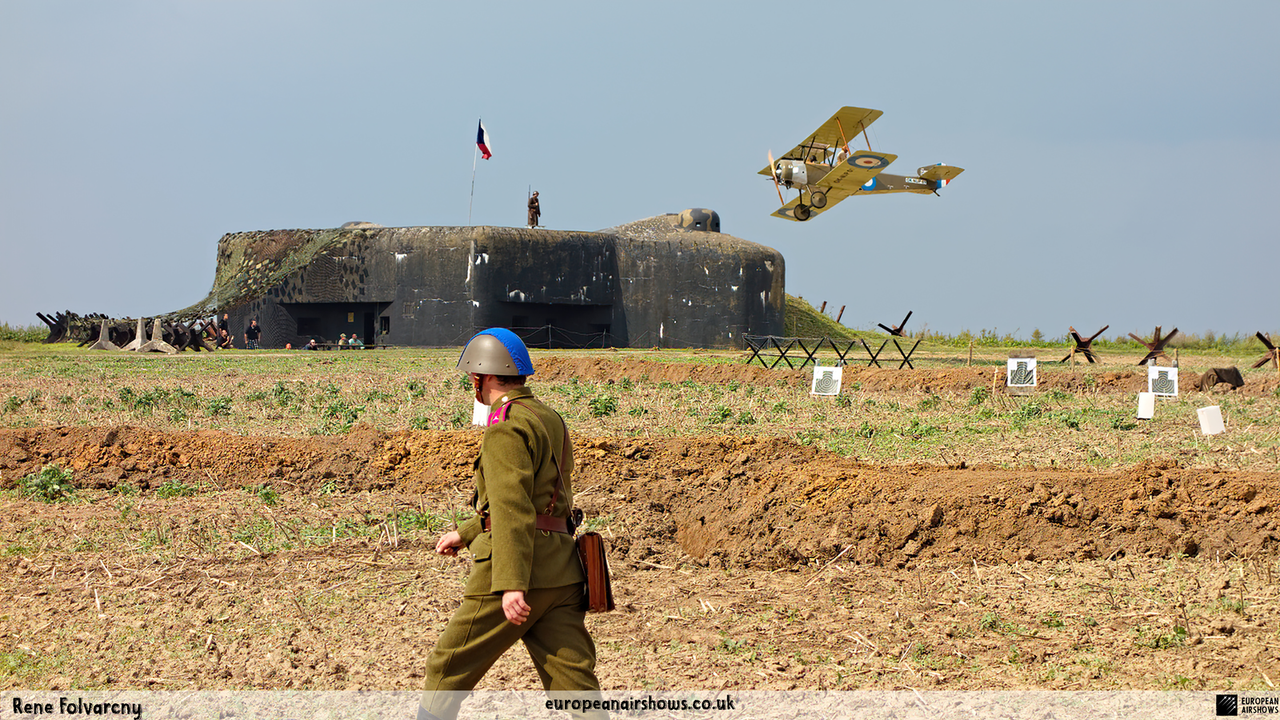
Pterodactyl Flight
About the Team
Pterodactyl Flight stands as a premier Czech civilian team dedicated to the meticulous reconstruction and demonstration of World War I aerial combat. Operating out of Zirovnice Airport, strategically nestled between the Highlands and Southern Bohemia, this team brings to life the intricate dynamics of early 20th-century air battles with remarkable authenticity. Their fleet comprises carefully crafted replicas of seminal WWI aircraft, including the Sopwith 1½ Strutter, SE-5a, and Fokker E-III, among others. Each aircraft is engineered to achieve precise flight performance at speeds around 120 km/h, balancing historical accuracy with operational safety. The team offers a range of bespoke air show formats, tailor-made to suit diverse client specifications, ensuring that each performance delivers a compelling and immersive experience. Spectators are treated to a vivid portrayal of aerial warfare, executed within controlled proximities of 50 to 300 meters horizontally and 2 to 100 meters vertically, allowing for an intense yet secure viewing environment.
Team Overview
Number of Aircraft
8
Established
N/A
Based
Zirovnice Airport
Aircraft Type
Fokker Dr.1 / Fokker E.III / Fokker D.VII / MS.185 / Sopwith 1½ Strutter / S.E.5a / Sopwith Camel
About the Aircraft
The heart of Pterodactyl Flight’s performances lies in their diverse and meticulously reconstructed fleet of World War I aircraft replicas. Each machine is a testament to historical fidelity and engineering prowess, embodying the design and performance nuances of its original model. The Fokker Dr.I replica, with its iconic triplane configuration, showcases exceptional agility and was famously piloted by the legendary Manfred von Richthofen. Its three-wing structure not only enhances maneuverability but also provides the distinctive aesthetic that makes it instantly recognizable. The Fokker E.III replica, integral to the Eindecker series, features the pioneering synchronized gun system that revolutionized aerial combat by allowing forward-firing armaments without compromising the propeller.
Complementing these are the Fokker D.VII replicas, renowned for their superior aerodynamics and handling, making them formidable in simulated dogfights. The Morane-Saulnier MS.185 Avionnette replicas bring versatility and precision to the showcase, originally serving as agile aerobatic trainers. Each Sopwith 1½ Strutter replica serves dual roles in both fighter and reconnaissance capacities, reflecting its historical significance as the first British aircraft equipped with synchronized machine guns. The Royal Aircraft Factory S.E.5a replicas, often dubbed the “Spitfire of World War One,” illustrate remarkable speed and stability, traits that were pivotal in regaining air superiority during the conflict. Finally, the Sopwith Camel replicas demonstrate exceptional maneuverability and the intricate handling challenges that pilots of the era faced, making their performance both a display of skill and a homage to the pilots’ prowess.
Every replica is constructed with an unwavering commitment to detail, utilizing historically accurate materials and construction techniques wherever feasible. The engines are calibrated to emulate the power outputs and performance characteristics of their originals, ensuring that flight dynamics remain true to history. Armament systems are faithfully replicated, allowing for realistic simulation of combat scenarios, while camouflage patterns are carefully chosen to reflect the markings used during the war. During performances, these aircraft engage in choreographed sequences that include synchronized takeoffs, strategic climbs, coordinated ground attacks on replica Hanomag vehicles, and intricate aerial engagements. Pyrotechnic effects are seamlessly integrated to simulate explosions and fires, enhancing the realism of each demonstration. The grand finale typically features a dramatic portrayal of victory, with triumphant maneuvers or synchronized landings that leave a lasting impression on the audience. Pterodactyl Flight’s dedication to authenticity and excellence not only entertains but also educates spectators, providing a vivid and accurate representation of the tactical and technical aspects of World War I aviation.
Team History
Founded by a collective of passionate aviation historians and skilled engineers, Pterodactyl Flight emerged from a shared vision to preserve and celebrate the rich heritage of World War I aviation. The inception of the team was driven by a desire to recreate the valor and ingenuity of early aviators, translating historical records and blueprints into fully functional aircraft replicas. Over the years, the team has honed their craftsmanship, collaborating with experts in aerodynamics and restoration to ensure each replica not only mirrors its historical counterpart in appearance but also in flight characteristics and handling. Their public debut marked the beginning of a series of acclaimed performances that have garnered widespread acclaim for their realism and technical precision. Through relentless dedication and continuous innovation, Pterodactyl Flight has expanded its repertoire, incorporating a diverse array of aircraft to depict various combat scenarios and pivotal battles, thus providing audiences with a comprehensive and authentic glimpse into the aerial confrontations that shaped World War I.
Did You Know?
- Pterodactyl Flight, a Czech civilian team, specializes in reconstructing and demonstrating WWI air combat using meticulously crafted replica aircraft.
- Pterodactyl Flight is based at Zirovnice Airport, strategically situated between the Highlands and Southern Bohemia.
- Pterodactyl Flight’s aircraft perform at a consistent speed of 120 km/h, creating authentic and thrilling WWI aerial battles for their audience.
- During their air shows, Pterodactyl Flight simulates attacks on historic replicas like the German Hanomag vehicle, complete with realistic pyro effects to enhance the spectacle.
- Each Pterodactyl Flight performance is carefully timed to last no more than 20 minutes, ensuring a dynamic and engaging experience without overwhelming spectators.
Test Your Knowledge
1. Where is Pterodactyl Flight’s home airport located?


























